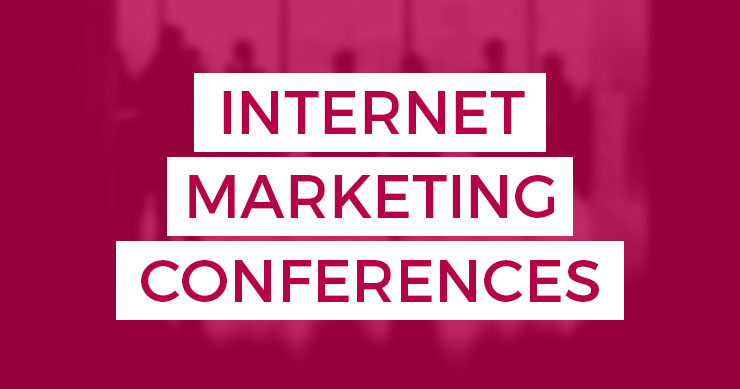 Recovered from the local information overload? I hope so because we’re about to hop straight into the next one. Next up we have Lena Flanigan, Gil Reich, Conrad Saam, and Dustin Woodard. If you run into Conrad later, ask him about his love for Seattle coffee. He has a really great story he likes to tell people. [hides from Conrad]
Recovered from the local information overload? I hope so because we’re about to hop straight into the next one. Next up we have Lena Flanigan, Gil Reich, Conrad Saam, and Dustin Woodard. If you run into Conrad later, ask him about his love for Seattle coffee. He has a really great story he likes to tell people. [hides from Conrad]
Okay! Time to jump into things. I apologize to everyone sitting around me for the coughing. I couldn’t find a Lisa-sized bubble in my new SMX backpack. As a result, I offer the gift of death. You’re welcome. Time to get into the good stuff!
Up first is Gil Reich.
Gil’s presentation will be all about growing your site through search traffic and community generated content. First topic for discussion, search traffic!
Gil says that the content that gets the most search traffic is content that people are looking for. Which makes sense. He jokes that people can’t type in the punchline of a joke they haven’t heard yet. One of the incredible things about the Internet is there are now billions of pages on the Internet that have specific pages tailored to specific questions and people are going to Google and finding that content.
People go to Google
Cool quote from Stack Overflow founders Spolsky and Atwood: We view Google’s results page as our homepage. It’s well known that 90 percent of our traffic comes from Google. “I just use Google” is a common answer to telling people about their award-winning dictionary/encyclopedia.
Key Points to take away:
- When people are looking for specific information, they go to Google.
- What kinds of content gets search traffic? Content people are searching for, content that ranks for the phrases people are using, and content that is linked to by other sites. User Generated Content is usually the perfect answer for this.
Community Generated Content
When you’re talking about community-generated content, Wikipedia is the authority site in the space. People trust Wikipedia. In 2003, they ignored Wikipedia because they didn’t it would go anywhere because it wasn’t “trustworthy”. A few years later they saw the error of their ways and started WikiAnswers, which now gets 5 million visitors a day. They use Wikipedia as a model.
Gil says that Community Generated Content can become high quality. The community is good at telling you what they want and they may even provide it for you if you let them.
Making Community Generated Content work for you
Get the community on your site: Identify what your community is looking for that you’re not providing on your site. How can you get it for them?
Corporate blogging: A great way to connect people to your story. He talks about the PetWiki which has two corporate blogs – one written as the family cat, the other coming from behind the site. A blog lets you build a community by connecting your story. It’s important to share content if you want people to share content back. Gil pimps out Outspoken Media’s Thanks For Commenting page as a great way to invite people into your community. I agree. :)
Gil says that one reason people go to sporting events instead of watching them at home, is to be part of the community. The more you can move people to that, the better. I think that’s a really important part – tapping into people’s need to be connected.
Getting Your Message on Other Sites
They use Wikipedia as a role model, except here. Wikipedia is based on the model where the individual is hidden. Everything has to be from a neutral point of view. The social media realities have changed all that. You want to serve the community, then serve yourself. His speaking at this conference is a form of UGC for the conference. He’s trying to serve Answers.com so they send him back. He’s trying to serve his wife so she lets him come back. But first, he has to serve the audience. Otherwise, he won’t even be invited back.
How to add content to other people’s site?
- Have a fan page on Facebook
- Have a Twitter account
- Share your content on social media sites
He calls out YOUmoz as being a great example of a site that benefits from User Generated Content. He pulls a number of examples from SEOmoz. Why? He says because Rand once commented he liked his site. Hee, nice. :)
Content that gets a lot of search traffic also often monetizes best through search advertising, though the more you can target your ads the better. Low quality CGC can hurt efforts to attract advertisers. People can connect to monetized brands but you have to be careful about how you do it.
Next up is Dustin.
Why would you want to add UGC to your site? Studies show that 2/3 of customer touch points are user-generated. Even if you’re not participating, they are. Another study says 2/3 of the Internet population has visited a social network in the past 30 days. Maybe it’s because there’s a movie about this topic (The Social Network). He went over the top 500 sites that receive organic traffic and found that 87 percent of them incorporated UGC.
UGC: The Movie [He calls this the sequel to The Social Network]
You’re going to have an army of writers.
Some ways to build out UGC opportunities:
Customizable Profiles
Why he likes it:
- Provides sense of ownership
- Provides users a reason to link
- Attract long tail name traffic
Warnings:
- Spam – the more popular your site, the more often it’ll happen.
- Choose URLs wisely – you don’t want to accidentally overwrite sections of your site. [Ha, I hadn’t even thought of that. What if someone calls themselves “images”?]
Photos & Videos
Why he likes it:
- Free
- Easy Add-on
- Taps into specialized search traffic
Warnings:
- Surround images and video with text content
- Put keywords into file names and populate alt tags
Reviews, Comments & Voting
Why he likes it:
- Adds unique content
- Easy to implement
Warnings:
- Could hurt sales
- Gaming & Spam – If you’re running a voting site, the battle is always that people are trying to game the system.
Message Boards & Forums
Why he likes it:
- Easy user adoption, everyone knows how to use them
- Long tail opportunities since everything is in text form
- Email tie-in
Warnings:
- Can get off-topic
- Pagination users
Question & Answers
Why he likes:
- Matches search queries
- Creates highly unique content
- Solves problems
- Strokes egos
Warnings:
- Don’t launch w/ an empty slate
- Look out for over-sized questions
Wikis:
Why he likes it:
- Creates solid pages
- Pages stay fresh
- Promotes content creation
Warnings:
- Avoid wiki-syntax
- Permission schemes & ability to revert changes are key
- Keep spiders out of revision history
Custom UGC for Your Niche
Why he likes it:
- Structured data
- Competitive advantages
Battle Duplicate Content: Disallow duplicate titles and URLs. Be careful of users moving, renaming or deleting content.
Next up is Lena Flanigan.
Case Study: Ask Your Customer
She asks people to raise their hands if they believes customers are sharing experiences with their products on the Web. Lots of people raise their hands. Which is good, cause, well, they are. It’s nice to see marketers realize that, even though the SMX group is skewed. Because they’re smarter than most people. Sorry, I just started rambling.
Her company created a UGC platform for users, as well as internal communications. More than 60 percent of their customers are trying to find info about medical conditions, etc, via the Web.
Any UGC effort will be based on:
- What makes sense to the customers, not the search engines?
- Executive buy-in
- Team commitments – like Dustin said, make sure you shell it with content before you launch
- Cost, resources, reporting, potential SEO implications and more
Case Study 2: Defining what kind of UGC you might need
There are lots of ways to get UGC going. You want to build the content that will give you the best SEO benefit. Any SEO project should involve keyword research. You should know your search numbers and any gaps in your search coverage. That’s extremely important. Look at your well-performing keywords to see if there are any gaps in coverage that you can cover. Or look at your under-performing keywords to look at how to drive traffic from those terms. Design your content categories based on potential search demand.
Case Study 3: What forms of UGC work best for you
There are a lot of choices. You have social media sites, you can use Wiki functionality, you can develop your own product, etc. Her advice is to try to participate in the existing communities first. There’s a lot to learn there. All of her marketing managers are trying to monitor Twitter feeds that best describe the businesses that they work with. One day one of her managers noticed a feed coming in that mentioned the lab where that customer was working. They were able to get a sales leads from that lab because they were monitoring the conversation on Twitter.
She’s a strong believer that customers like and LOVE UGC and that they prefer it over anything else. When you encourage users to use UGC, you empower them and put yourself above your competition. Awesome.
Next up is Conrad.
He’s going to talk about the ugly side of UGC – opinions. We all know what people say about opinions…
His company is Avvo – they’re a legal directory. They house opinions about lawyers. I’m guessing those opinions are not filled with rainbows and butterflies. He shows an example of some client reviews of Avvo — it’s not pretty. Well, at least if you’re one of these lawyers.
The Streisand Effect
In 2003 there was a photographer who hired a helicopter and flew up and down the coast of CA and took photos of beautiful real estate. One of those photographs was of Barbara Streisand’s mansion. She didn’t like the photo being shown so she sued him for 50 million dollars. She was trying to bully him into pulling the photograph down. Instead of taking it down, they went to the press. In the first month, it was view 500,000 times. The Streisand Effect says whenever you try and squish information, it propagates much more widely. [Love it]
ThinkGeek – Canned Unicorn Meat: As an April Fools prank, Think Geek put out a press release saying they were selling nicorn meat. A few days later the National Pork Board wrote them a letter saying they had to pull it down. ThinkGeek decided to post the Cease & Desist order. It blew up.
Why do we have the ability to leave reviews?
In 1996 Bill Clinton passed a bill that said a publisher of reviews are not liable for the information within the reviews. It’s targeted toward keeping the flow of information free. Bill wanted to make sure that people had access to lots of information. Section 230 of that bill protects publishers.
- Hookers & Craigslist: Craigslist is simply providing content from another information content provider [read: hookers]. So it doesn’t matter how illegal the activity is. In April of this year, Craigslist canceled its Adult Section [read about this in our Weekend Coffee Links from this past weekend].
- Yelp Lawsuit: Part 1 – Yelp has become so amazingly powerful at making or breaking local companies that there’s now been a bit of a backlash. A Yelp lawsuit was thrown out because people have a right to leave and read reviews. It fell under section 230 of the Bill Clinton bill.
- Yelp Lawsuit Part 2 – The lawsuit said the Yelps sales staff was using the reviews as currency to get people to advertise. This does not fall under section 230. They’re doing more than just facilitating information from another content provider so it’s not protected.
- Roomates.com: They provided a drop-down menu that forced you to answer racial questions. Because they did that, section 230 did not give them immunity.
The Future: Anti-SLAPP Legislation
Strategic Lawsuit Against Public Participation. Under SLAPP, the perosn who loses the lawsuit has to pay the other person’s legal fees. The purpose of the law is to try and prevent people from bully others via lawsuits as a way to censor information. For example, someone is sued for posting a photo and they just take the photo down because they can’t afford the lawsuit.
And we’re done! See you after lunch.

